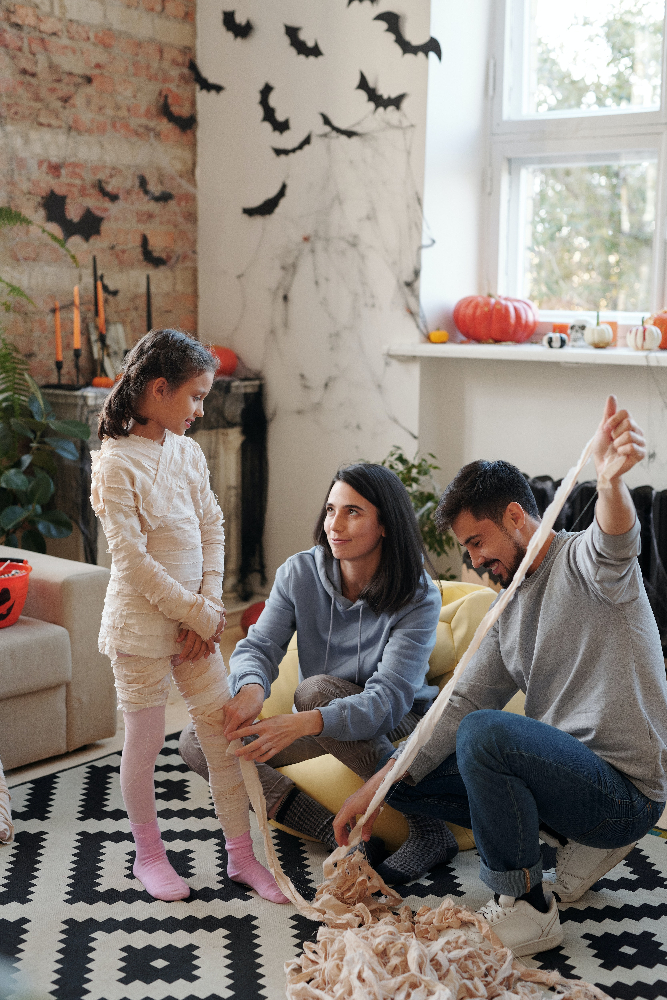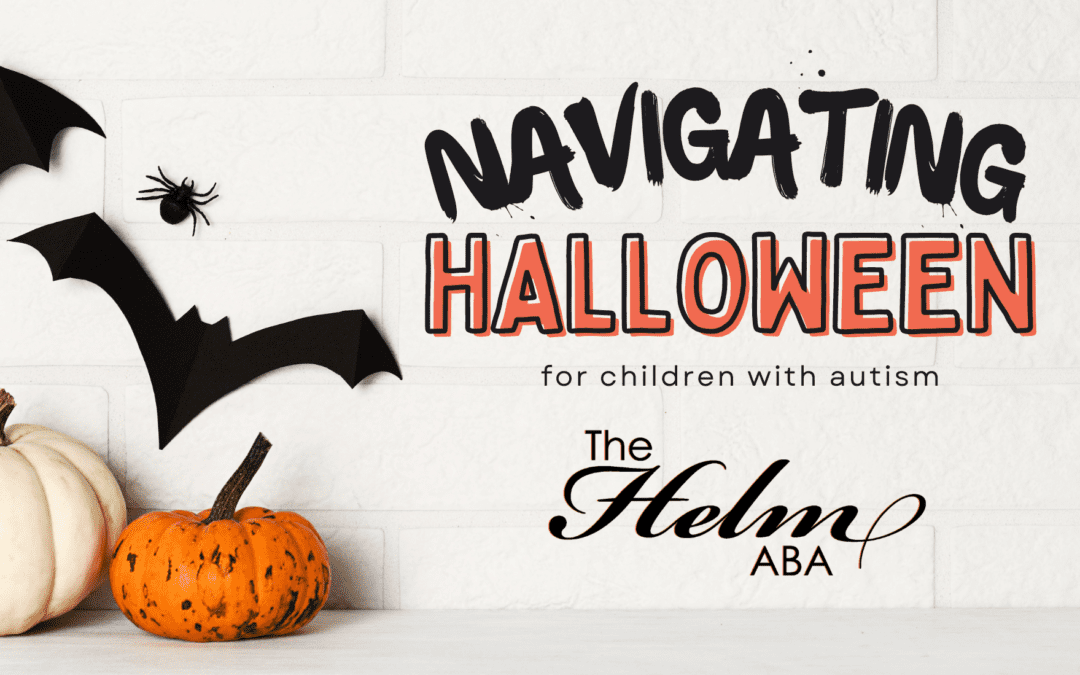Halloween is right around the corner! For many of our families that means it is just another night, because the thought of putting on costumes and walking the neighborhood is so anxiety provoking that they just rather not even attempt the holiday.
Who can blame them?
Halloween, although a hallmark of a playful childhood, requires SO many nuanced social skills that can make the evening daunting! Don’t be discouraged! There are simple steps that you can take to help your child, or students, experience Halloween without a fright!
1.Plan ahead and rehearse. One of the simplest things you can do is practice the routine of Halloween. Simulate Halloween throughout your house each day prior to Halloween. Dress up your child in their costume and practice going door to door and saying “trick or treat” or knocking and waiting. Incorporate the whole family in this fun practice run! Have one family member sneak in the room before and have a treat ready to give to the practicing trick-or-treater. Make sure to have the person answering the door use language that is similar to what your child will experience. Phrases such as “Hi there!” or “Wow, cool costume” are a bit different, but they all require the same response of “trick or treat!”

2.Pick a no-stress costume. In a world of Pinterest creations, it can be easy to go overboard and plan a great costume that will never be worn. Many costumes are not sensory friendly and don’t take into account the unique needs of your child. Plan a costume that may feel similar to their typical clothing to set your child up for a successful evening.
3.Read about Halloween. There are a wide variety of books that can help frontload what to expect during Halloween. These books can be helpful because it offers your child the opportunity to hear several different examples of the holiday without the pressure of talking or an overwhelming sensory experience. Download our Halloween Social Story to practice reading each night in preparation!
4.Make a schedule. Before trick-or-treating set up a schedule with your child in a way that they can understand that lets them know when they will trick-or-treat and when they will eat their treats. It can be very helpful to use a timer and refer back to the schedule frequently. There is a temptation to add in lots of fun diversions but be mindful that your child is looking to you for consistency and routine on a day that is less than typical.
5.Reduce the demands and use a card to replace verbal language. If your child is non-verbal or has minimal language, exchanging a card in place of saying “trick-or-treat” can decrease anxiety and reduce demands that may otherwise make the Halloween experience out of reach. Check out our Trick-or-Treat Card Download for you to print and use!
Still feeling spooked? Contact us at The Helm ABA and let us help you work through those holiday worries.

